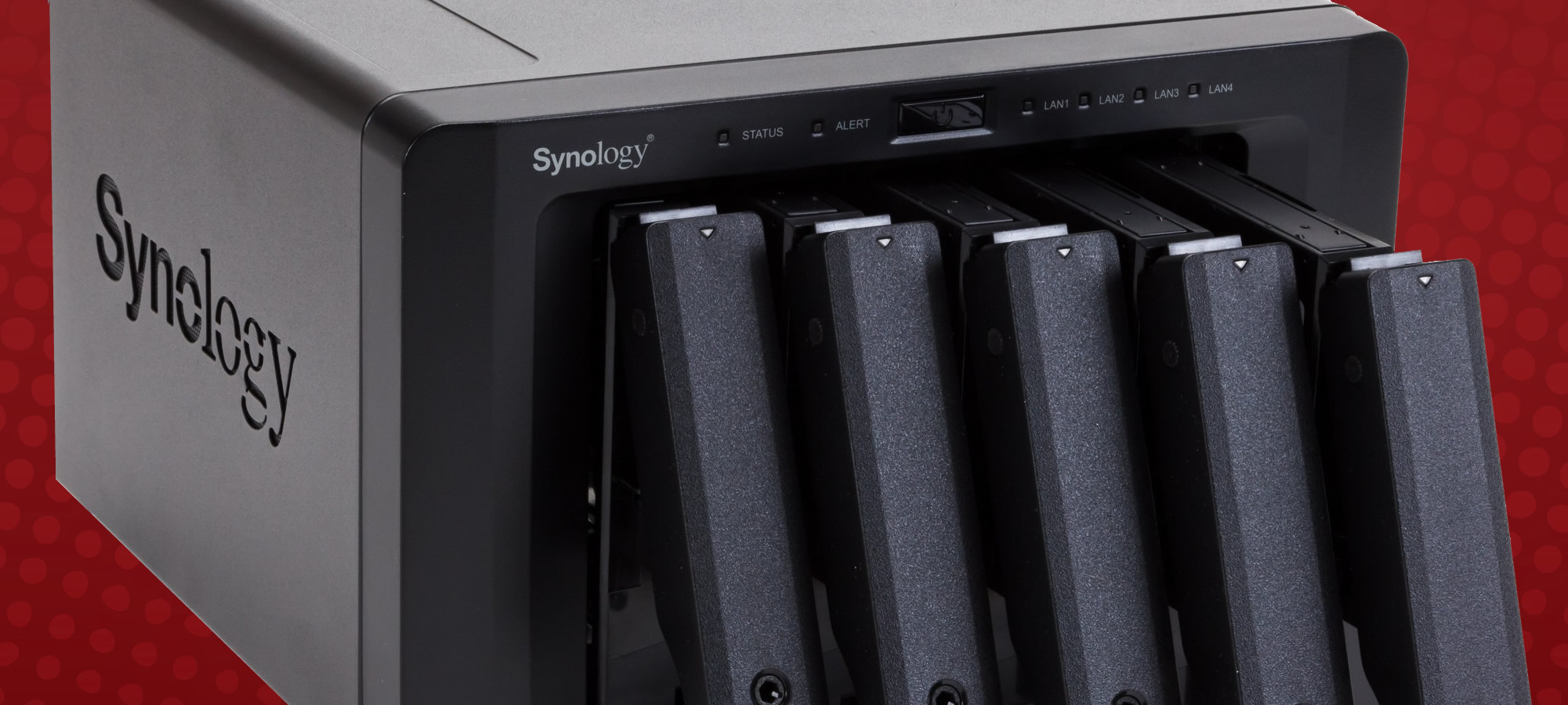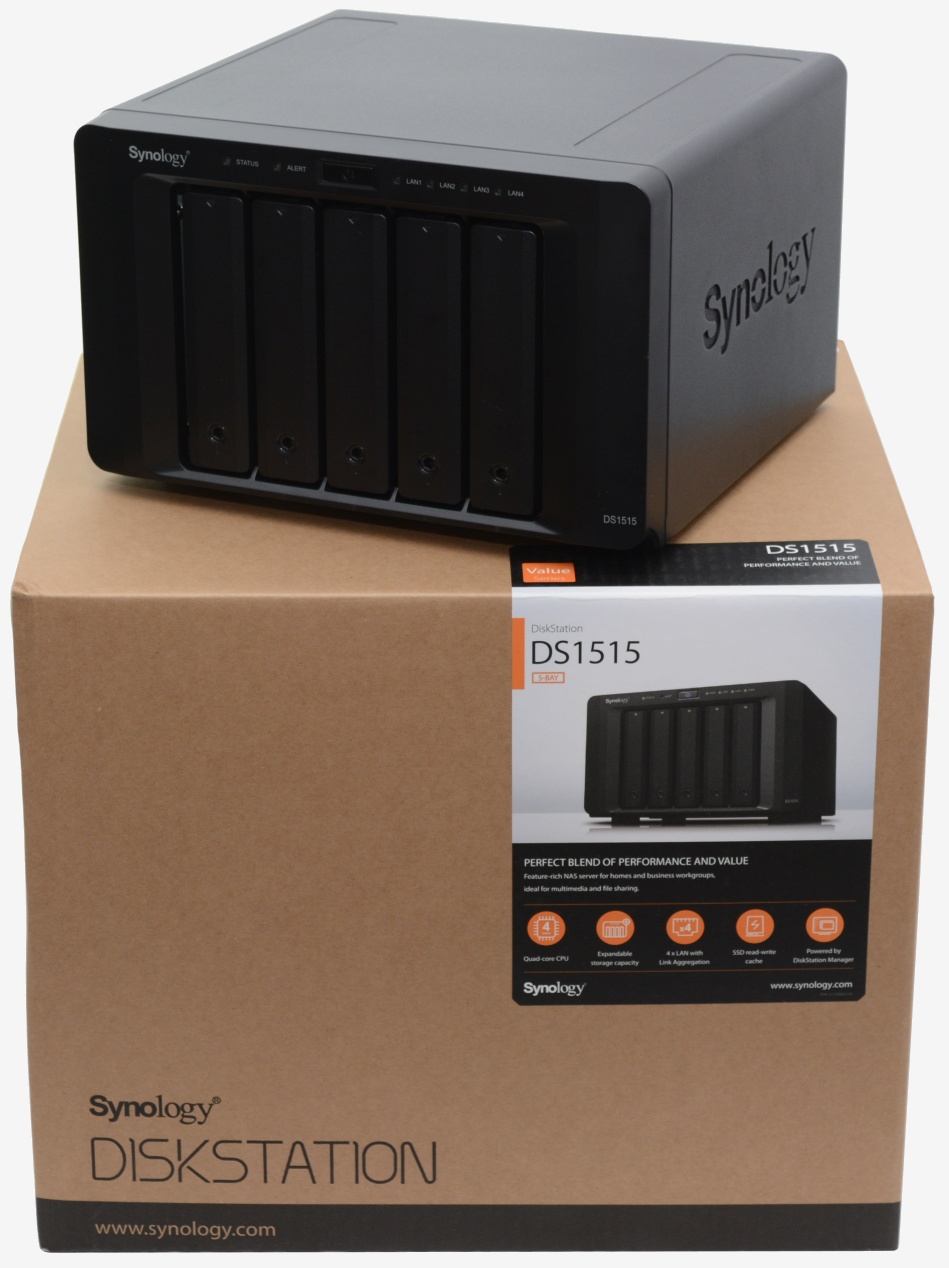The DiskStation DS1515 is aimed at home users as well as small businesses. Out of the box this NAS can handle five 3.5" hard drives, giving it a maximum capacity of 40TB using the latest 8TB drives, while the addition of two DX513 expansion units boosts capacity to a whopping 120TB.
Synology's DSx15 series began rolling out about a year ago now with initial models including the affordable DS415play, a multimedia NAS designed to allow home users to centralize their videos, photos, and music in one place. The DS415play was built around Intel's Atom CE5335 and to date the majority of the DSx15 series has an Atom SoC inside – the DS415+, DS1515+ and DS1815+ for example all feature the Atom C2538.
Going against that trend was the DS2015xs, announced late last year and equipped with a high-end ARM processor from Annapurna Labs. The quad-core Cortex-A15 clocked at 1.7GHz was a beast, delivering the best SoC performance we've seen.
As a large scale business NAS, the DS2015xs was priced at $1,500, a sum few home users could justify. Granted, that amount of cash buys a capable Annapurna Labs quad-core SoC, 2GB of DDR3 memory, five bays, dual USB 3.0 and eSATA along with quad 1GbE LAN supporting Link Aggregation and Failover.
For around the same price there are other alternatives such as the Seagate STDF100 ($600), Asustor AS-604T ($600) and QNAP TS-651 ($550 1GB or $700 4GB) and the TS-653 Pro ($770).
That territory is also now home to Synology's latest DiskStation, the DS1515, which we have in-house for review. Powered by an Annapurna Labs Alpine AL-314 quad-core SoC, we are keen to see how well the DS1515 performs, particularly compared to its closest rival, the QNAP TS-651, which we've already benchmarked.
From what we can see on paper, it looks like the DS1515 is trying to bring DS2015xs-like performance to home users at $650 versus $1,500.
DiskStation DS1515
The DS1515 is based on the same design ushered in by the DS1513+ back in May of 2013, which was in itself similar to the older DS1512+ model as well as the DS1010+ before it. Unsurprisingly then, the DS1515 has the same dimensions and weight as previous models, measuring 233mm long, 248mm wide, and 157mm tall as well as being just as heavy at 4.15kg – a figure that'll climb as you add storage. The front has five hot-swappable drive bays, each with their own lock and green activity light at the top.
Synology has integrated a small key hole into the bottom of each drive tray that lets you lock individual drives. This implementation is more attractive than you'll find on other NAS devices.
Once unlocked, the bays release with a simple press. Sliding drives in and out of the DS1515 is a breeze. Better still is the tool-less design that allows for the installation of hard drives in seconds without using a screwdriver or screws. This was one of our favorite design improvements of the previous DS1513+.
Directly above the hot-swappable drive bays are six more activity LEDs that indicate status, LAN1, LAN2, LAN3, LAN4 and alert. There is also a bright blue LED integrated into the power button which indicates that the unit is active.
Spinning around to the back reveals a pair of 80mm fans, quad Gigabit LAN ports, two USB 3.0 ports, two eSATA ports for connecting up to two DX513 units and a 3-pin power connector.
Synology has upgraded the cooling of the DS1513+ to include detachable fans and this feature has been carried on to the DS1515, which should make it easier to clean or replace if they fail.
As mentioned, the eSATA ports can be used to connect the DS1515 to one or two DX513 expansion enclosures, adding up to 10 more bays to the base configuration. The four Gigabit LAN ports are used to achieve the claimed 403.77MB/s read and 421.85MB/s write performance.
They do this by using Link Aggregation technology, which allows grouping several physical Ethernet links to create one logical Ethernet link for the purpose of providing fault-tolerance and high-speed links between switches, routers, servers and in this case, the Synology DS1515.
Each individual PC will still be limited to a single Gigabit Ethernet connection, but it means four users can simultaneously achieve maximum bandwidth to the DS1515, assuming it is fast enough (which it isn't given the claimed speeds).
Whereas models such as the DS415play feature front panel connectivity, Synology tends to exclude this feature on their more expensive models for whatever reason. This is the case with the DS1515, which features no form of front panel connectivity. This means quick copying from external media must be done from the rear of the unit, a potential inconvenience for some users.






